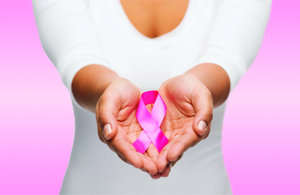Breast cancer screening: Choosing the option best for you
10/7/2024 by Liz Gilman, M.D.

Breast cancer is the most common cancer in women, regardless of race or ethnicity. One in eight women will develop breast cancer throughout their lifetime (by about age 80), according to the Centers for Disease Control.
What are the screening options for breast cancer?
Mammograms are X-rays of the breast, with or without tomosynthesis (3D imaging), and remain the mainstay of breast cancer screening. Mammography detects whether there are abnormal collections of calcium or an abnormal look to the tissue (asymmetry) that could indicate breast cancer before a lump can be felt. Mammograms also reveal breast density. Increased density, typically density C and D, is associated with an increased risk of breast cancer.
Recommendations generally suggest that average-risk women begin having mammograms at age 40. If you receive care at Mayo Clinic, you can schedule your mammogram using the patient portal.
There's more than one kind of breast screening examination, so it's important to talk with your primary care clinician about the options for screening and whether you're at average or increased risk. Together, you can make a choice that best suits your situation. Keep in mind that these options don't replace regular screening mammograms:
- Molecular breast imaging (MBI), a supplemental breast cancer screening test, doesn't replace mammograms, but an injected dye "sees" through dense breasts. MBI can also be used if the patient is at an elevated risk of breast cancer and needs specialized screening.
- Breast magnetic resonance imaging (MRI) is used in addition to a mammogram for women with a high risk of breast cancer, including greater than 20% lifetime risk, having a strong family history, certain genetic mutations or being treated with chest radiation for Hodgkin lymphoma before the age of 30.
- Automated whole-breast ultrasound (ABUS) is another tool for screening women with dense breasts. It uses sound waves to see through the breast. This test has a high false positive rate and isn't offered at Mayo Clinic.
- Thermography uses infrared technology to record different skin surface temperatures. Thermography is NOT approved by the Food and Drug Administration (FDA) for breast cancer screening because it detects only about half of breast cancers.
Can I do anything to decrease my risk of breast cancer?
The good news is that the answer is "yes." There are things you can do to decrease your risk of breast cancer.
- We know that, especially for women who have gone through menopause, being at a healthy body weight decreases the risk of breast cancer.
- Regular aerobic exercise, 30 minutes at least five days per week, can lower the risk of breast cancer by 10% to 20%.
- Alcohol is also known to increase the risk of cancer, and women who have two to three beverages per day have a 20% higher risk than women who don't drink alcohol.
- Smoking also increases the risk of breast cancer. If you smoke and are ready to quit, consider asking your primary care clinician for help.
- Women at a very high risk of breast cancer may choose to take medication to reduce their risk in discussions with a clinician.
- Studies have NOT shown an increased risk of breast cancer by wearing bras, drinking caffeine, or using cellphones or deodorant/antiperspirant.
Liz Gilman, M.D., MSM, is an Internal Medicine physician in the Division of General Internal Medicine. She spends time in the Breast Clinic and has a special interest in breast cancer prevention and women at a high risk of breast cancer.
